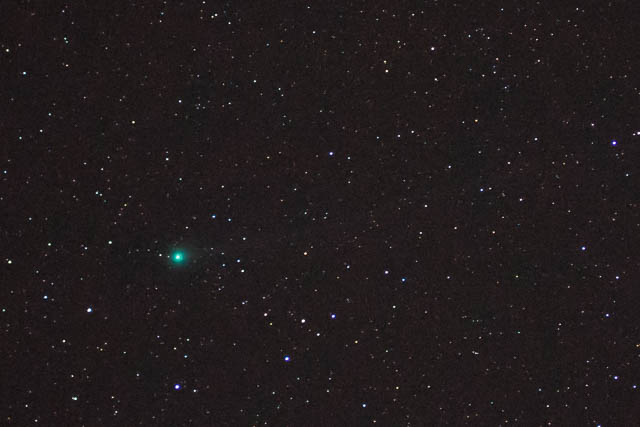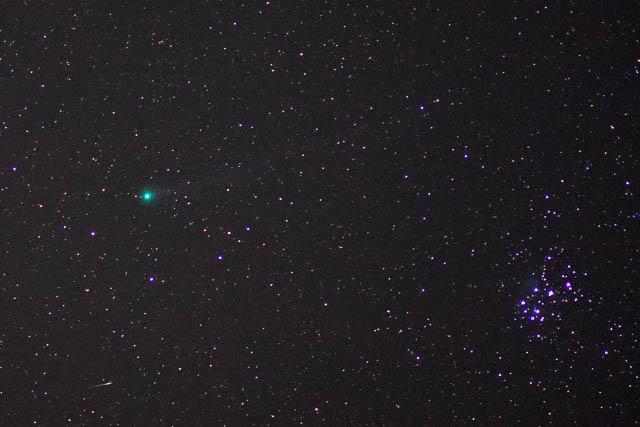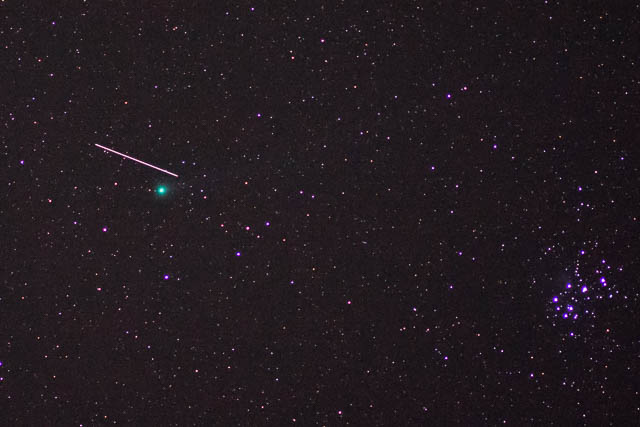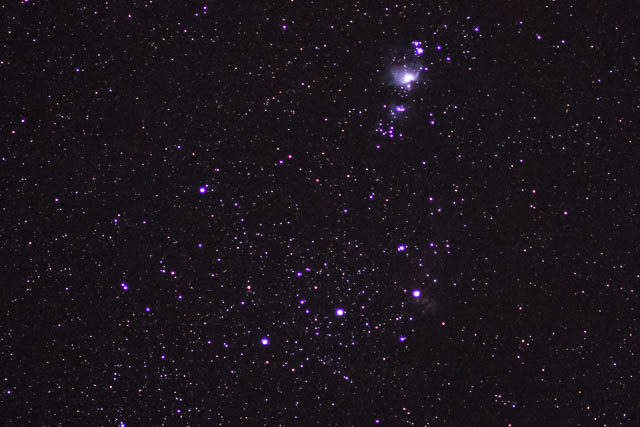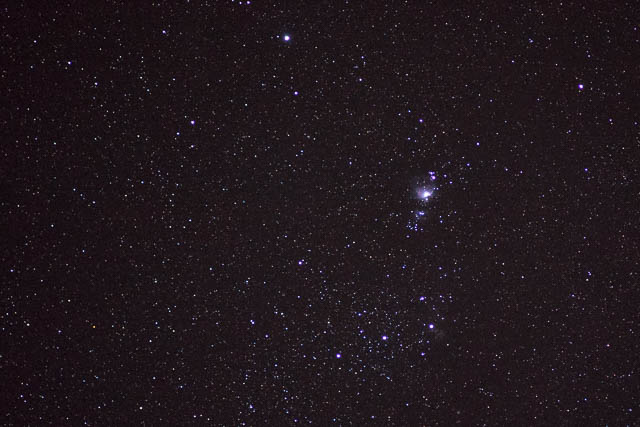The comet, C/2014 Q2 Lovejoy, which is relatively bright and easy to see late at night, is slightly past is peak brightness (January 11) but this evening provided both a sky with little light pollution (at Blackheath) and no moon.
Most comets are only visible when at a close angular position relative to the Sun – so have to be observed either in the early evening or just before sunrise in the morning – hardly times with dark skies. This comet did not pass very close to the Sun, so it was still visible later in the evening when the sky was much darker, but this also means that it tail is not very large.
All I had with me to take photographs was a camera, standard lens and a tripod. Typical settings were – 55 mm, f 1.8, 5 seconds, 3200 ISO.
I also took a few photos of Orion –
The Great Nebula in Orion is clearly visible, as well as a faint red glow near the right had star of the belt.

